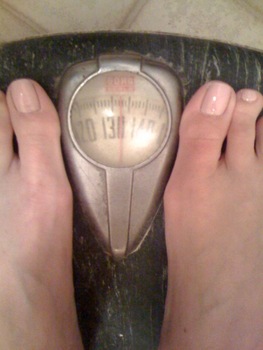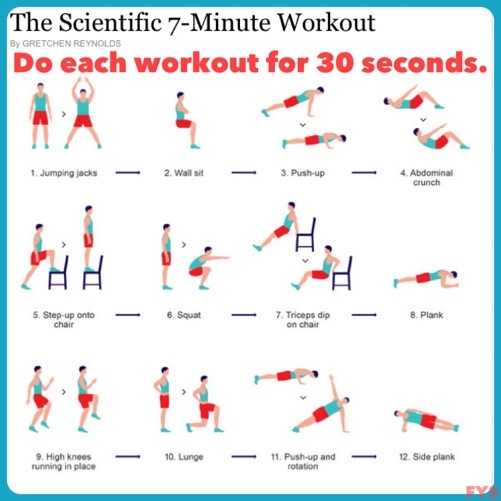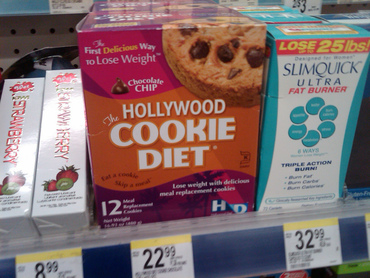|
Do you have 7 minutes a day? Then, yes, you do have time to exercise. Latest research says that yes, just seven minutes of exercise can do a body good. But what exactly can you hope to accomplish in just seven minutes? That’s less time than it takes most of us to shower, or brew coffee. According to this research article published last May, a specific format of exercise can decrease body fat, improve insulin sensitivity (very important for pre-diabetics and diabetics), improve your body’s oxygenation (that’s good) and increase muscular fitness. So what is this specific type of exercise that can do all this in just seven minutes? High Intensity Circuit Training, that’s what. Using only the resistance from your body weight, a wall, a floor and a chair, you can experience a full-body workout within a coffee break. And reap the benefits, too. Here’s an overview of the exact exercise tested in research. Each activity is performed for 30 seconds as fast/hard and safely possible, with 10 seconds rest between. And that comes out to a total of 7 minutes of exercise. Although their research has been shown that seven minutes definitely has positive benefits, if you are looking to seriously lose weight, build muscle, and reverse high blood sugars, the authors advise performing this circuit training 3 times in a row per day for a total of 21 minutes. If you’re looking to reverse obesity and prevent chronic disease, I think you’ll be able to find 21 minutes to spare in your day.
If you are new to exercise, or new to these type of activities, you may want a fitness trainer or some other type of professional to help instruct you in safe and proper form. The last thing you want is to get injured while trying to do something healthy for yourself. Have you tried this before? Do you regularly do some form of high-intensity or circuit training? Let me know your experience. And of course, leave any questions below! To your good health and fitness, Dr. Angela Resources: Follow along to an instructional YouTube video Stay on track with the free online 7 Minute Scientific Workout Timer Further reading/reviews: Wellness/NY Times review Huffington Post
1 Comment
If you’re an athlete, outdoors enthusiast or clumsy and prone to injuries, you’ve probably heard of RICE. It’s something that most of your doctors know, and what they have commonly told you to do: Rest, Ice, Compression, Elevation. Sprained ankle? RICE it. Torn rotator cuff? RICE it. What to do with your rice cooker? Rice it. Ok, joking on the last one. But in all seriousness, there is now a big revolution in the way we think about injury, inflammation, and what should we really do? Introducing MEAT: Movement, Exercise, Analgesia (pain relief), Treatment (alternating hot and cold, acupuncture, etc.). What’s the big change? Well if you look at the details of those acronyms, they’re almost opposite.
What was Rest is now Movement. What was Compression and Elevation (so sitting laid up somewhere) is now Exercise. These are some common recommendations that those of us in the alternative medicine field have known of and have been using for a long time. But now it is nice to know that my hesitance to fall in line with RICE recommendations is now more scientifically proven and that MEAT really is the way to go (sorry vegetarians, I didn’t make it up). And the last important details (or disclaimers, whatever you want to call it): -A sprained ankle may not just be a sprained ankle! There could be ligament or tendon tears, or a break in one of the many small ankle bones, so get it checked out by a healthcare professional. -Don’t push yourself to recover so quickly that you end up hurting yourself further. Yes, movement is beneficial after an injury, but that means some gentle walking or yoga-like activity, not a half-marathon the day after. I do offer a lot of support and treatments for acute injuries in my office, and also work closely with acupuncturists, massage therapists and chiropractors, so if you have any questions about this, please let me know! Hoping you recovery swiftly and fully, Dr. Angela Further reading on the research and clinical findings of MEAT- check out this website.  So back in my "Nutrition 101" days of my Naturopathic medical education, I learned the commonly taught old school nutrition idea of: "weight loss = more calories burnt than consumed" So that's it, huh? Eat less calories, burn more calories and weight loss will be a sure thing? Well, most of us know it's just not that easy. In fact, many find that they gain weight during and after dieting, even if they increase their activity level. So what's going on?! The fact of the matter is, only 1 in 6 dieters keeping the weight off (after a year). So why can't we all just follow that easy formula and lose those extra pounds?! ...because it just isn't so simple. We are a little more complex than calorie consuming and burning machines (but you probably knew that already). An article published last week in the Journal of the American Medical Association provides a little insight into some of those dieting and weight loss complexities. The publishing authors looked at overweight research participant using three different diet and weight loss programs and measured their success. The three diets were low-fat, low glycemic and low carbohydrate (high protein). Under carefully monitored in-patient hospital settings, the low glycemic dieters burned an average of 200 calories per day more than the low fat. The low carbohydrate dieters lost 300 calories more per day than the low fat dieters but saw an increase in blood levels of inflammatory markers (cortisol and CRP). So what does this all mean?! Just follow the diet where people burned the most calories while being constantly monitored in the hospital? Well, that doesn't sound like a very enjoyable diet program to me. If you're considering a weight loss-focused diet and exercise program, think about getting an expert involved to guide your path to success. If you haven't heard by now, my past 'slim down & happy up' program sessions have provided women (& men) with guided, individualized meal planning, diet guidelines and exercise recommendations. Combined with unique natural formulas that I craft specifically to each participant, this really is my all-in-one tool to address weight loss and stress reduction for long-term success. Registration for our next session opens Monday, August 19th, full details here. Join us for 3 months, and just see what a profound impact you and I can have on your health and quality of life! Ninety percent (90%!) of cancers have preventable causes. Here's a quick "What are my chances of getting cancer" quiz. Count up your points for these health factors. Do you: Exercise? Yes= 0 Sometimes=1 Never=2 Smoke? No=0 Used to=1 Yes=2 Drink alcohol? No=0 More than 2 a day=2 Get checked for STIs? Yes I have=0 No or "What is that?" =1 Eat fast food? No=0 Occasionally=1 Daily=2 Have exposure to any of these known carcinogens (means cancer-causers). One point for each: radiation exposure (occupational or many, many X-rays), polluted water, chemical or industrial toxin exposure (such as from your occupation or living nearby a chemical plant) and a history of bad (blistering) sunburns. Now, if you didn't notice the pattern above, this is not the SATs. More points is not better- it's worse off for your cancer risk. And since 95-98% of all cancers are not genetic (inherited and perhaps inevitable), then that means there's ample time and resources for cancer prevention. Take a look at this engaging infographic from Rock Your Cause and see your nearest preventive medicine doc and cultivate your health for now and decades to come. Contact me for more, or feel free to email me day or night at [email protected]. Be healthy, well and happy. And remember, "prevention is the best cure."
I was asked to write an article without all the fancy scientific words and research. I welcome a challenge, and here you go. People frequently want to talk with me about diseases (that maybe they or a family member have), treatment options, herbal information or advice. And it's really understandable- I am required to fit all that information in there. The only problem, because I truly do want to help people, is that "diagnosing or treating" is something that only a doctor can do for a patient. Providing that information without having that relationship gets me into hot water. So, here's a mini-series (I'm guessing only two, so a "very mini" series) on what I'm seeing as the top things that doctors, public health officials and medical researchers are saying to do for your health. Step 1: Exercise. It appears to matter less what type, or how much, or for how long. As long as your moving on a regular basis, those in the know say that may experience such "side effects" as weight loss, mental clarity, more stable mood, better digestive functioning, less fatigue, improved heart health (and pretty much every other organ as well) and decreases the effects of most types of chronic diseases- just to name a few. So, move your way to health. And watch the below video for some animated inspiration. When it comes down to it, most people just want to know how to be healthy. And, of course, we all have our unique set of medical concerns- but exercise can help most of those (and has been shown in research). Now, 30 minutes of walking as suggested in the above video will be easy and doable by most readers here, but consult a doctor if you're considering a drastic change to your exercise routine (or beginning one for the first time). I won't be held responsible for anyone's kick boxing-induced injuries.
If all of the above information is still not convincing, then either find what works for you. Some healthcare practitioners are great at helping folks make positive changes to their daily routine (I like to think of myself as one in training). For yet further information about exercise and research-based recommendations, check out Harvard's School of Public Health article "The Benefits of Physical Activity." Currently, about 10% of preschool children and 19% of children ages 6-11 are obese. New research from the Archives of Pediatrics & Adolescent Medicine has found a link between specific infant growth benchmarks and a high risk for childhood obesity. This isn't as straightforward as "fat babies become fat kids." Many thin and average sized adults started out as pudgy babies. And many school-aged children and adults begin struggling with weight gain well after their baby years. What the researchers found was that the greatest risk for developing obesity was growing across three major percentiles (25%, 50% and 75%) between ages 1 to 6 months old. So those babies who are most likely to become obese by age 11 years are those who start out as relatively small infants ( under 25th percentile or more than 75% are larger than him/her) in the first month of life, but then grows rather fast and tips the tables towards being one of the larger babies (now over the 75th percentile or less than 25% of others are larger than him/her) by the sixth month of life. So little bitty babies who become big pudgy babies quickly are those most likely to be obese by grade school. The authors have made the connection, but not explained why that trend continues int childhood. This is a multi-factorial issue, with some of the reasons for the relatively fast weight gain outlined by the authors being: -Less mobility: these babies may be in strollers, car seats or other stationary positions for longer periods of time. -Over-fed or fed "incorrectly" such as juice in bottles, solid foods introduced early (before 6 months). Now, nobody's talking about signing these infants up for Jenny Craig for Babies (which I'm thankful isn't even a real thing). But, like the rest of us, some attention to food and activity goes a long way. If the rest of the family eats healthy, wholesome meals and makes time for exercise and activities, these will surely be healthy attributes of even the pudgiest baby.
Another suggestion offered by consultant pediatrician Dr. Joanna Lewis is for the family to all sit down and eat together, as "research has shown that obesity is less common in children raised in families that have frequent meals together at home." So without thinking that this research defines or limits anyone's potential for health, instead see this as allowing us to understand how influential to our health early eating and activity habits are. Thank you for reading! Research looking at Tai chi versus heart failure-related education in recently published in the Archives of Internal Medicine (LA Times summary article here). When looking at lowering depression, increasing vigor, mood, quality of life and daily activities, who came out ahead?
Tai chi, on all counts! This form of movement is part exercise, part meditation and part stress reducer. While practicing tai chi, one is moving, balancing and culminating the energy within and beyond the practitioner. The control group for the tai chi research, education on heart failure, actually caused increased levels of depression and decreased levels of vigor by the participants. So if you're looking to add a movement/meditative practice to your schedule, consider looking into local tai chi classes. If you're looking to maximize the tai chi ambiance, Portland's downtown chinese garden (recently renamed Lan Su) has weekly group tai chi practice, free with admission (information here). Get that chi flowing, your body will thank you! Comments? Questions? I'd love to hear it! -Angela Most people have more inflammation (what we may call "pro-inflammation reactions") happening than their body really needs. Too much inflammation increases the severity of all those diseases and medical conditions we discussed in Part 1 (few diseases are really free from inflammation's influence), as well as leading some seemingly minor health complaint (such as occasional achy joints or a mild skin rash) into more severe disease categories all together (developing Rheumatoid Arthritis or Ezcema).
High levels of inflammation also lead to other diseases or conditions hopping on for the ride and serve to worsen your overall health (high blood pressure, then coronary artery disease then heart attack). To combat this, one must identify what actions and circumstances lead to more vs. less inflammation. Inflammatory causes are a lot farther reaching than simple traumas. Most of your body's inflammation actually comes from all those factors in your day to day life that stress you out and make you less healthy overall. These include dietary and exercise choices, as well as pretty much any thing you surround yourself with that exhausts you and makes you irritable and on edge (work? relationships? daily commute?). And anti-inflammatory helpers include a much larger list than just that Aspirin or Aleve in your medicine cabinet. Every choice you make to lessen stress and strengthen your health are working on your side to decrease inflammation in your body. Calm, nutritious, leisurely dinner with loved ones? Put that in the anti-inflammatory column. Cramming down a burger and cola while fuming about the rush hour traffic you're trapped in? That is upping the inflammatory responses in your body. So continue to make choices to support your health and lessen your stress. Lastly, feel free to contact me any time to continue this discussion further. I'm also open to topic suggestions, particularly related to health in the news. Send me an article link, or other topics that have come to your attention, and I look into writing a piece about them here. Thanks for reading! Angela |
Archives
June 2024
Categories
All
|
about the doc |
patient infocontact |
|
Privacy Policy
© Copyright 2011-2024, Dr. Angela Cortal ND LLC website content is for educational purposes only and is no substitute for medical advice (see the Terms of Use Agreement for this site), you must establish a doctor-patient relationship to receive that! |




